Experiencing the Dance of Existence
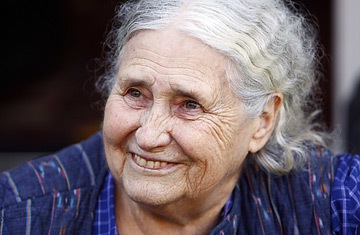
“The world was spinning like the most delicately tinted of bubbles, all light It was the mind of humanity that I saw, but this was not at all to be separated from the animal mind which married and fused with it everywhere. Nor was it a question of higher or lower… I watched a pulsing swirl of all being, continually changing, moving, dancing, a controlled impelled dance, held within its limits by its nature, and part of this necessity was the locking together of the inner pattern in light with me other world of stone, leaf, flesh and ordinary light…
And on this map or plan that showed how myriads of ridiculously self-important identities were reduced to a few, was another, different, but, in some places, matching pattern, of a stronger, rarer light (or sound) that varied and pulsed and changed like the rest but connected direct, made a link and a bridge, a feeding channel, between the outer (or inner, according to how one looked at it) web of thought or feeling, the pulsating bubble of subtle surrounding color, and the solid earthy watery globe of Man. Not only a link or a bridge merely, since this strand of humanity was open like so many vessels open to the rain, but part of the shimmering web of fluid joyful being, which was why the scurrying, hurrying, scrabbling, fighting, restless, hating, wanting little patches of humanity, the crusts of lichen or fungi growing here and mere on the globe, the sea’s children, were, in spite of their distance from the outer shimmering web, nevertheless linked with it always, since at every moment the glittering tension of singing light flooded into them, into the earthy globe, beating on its own delicious pulse of joy and creation.”
–Doris Lessing (Iranian-born South African Expatriate Writer and, in 2007, Winner of the Nobel Prize in Literature, 1919-)

“Briefing for a Descent Into Hell (Vintage International)” (Doris Lessing)
Creative Information
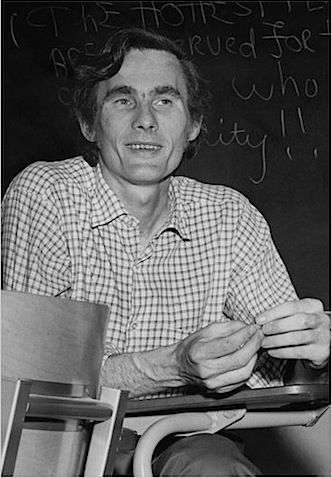
(Picture courtesy of New York Times)
“The original root of the word “information” is the Latin word informare, which means to fashion, shape, or create, to give form to. Information is an idea that has been given a form, such as the spoken or written word. It is a means of representing an image or thought so that it can be communicated from one mind to another rather than worrying about all the information afloat in the world, we must ask ourselves what matters to us, what do we want to know. It’s having ideas and learning to deal with issues that is important, not accumulating lots and lots of data.”
–Theodore Roszak (American Social Thinker, Critic and Writer, 1933- 2011)
Energy Consciousness
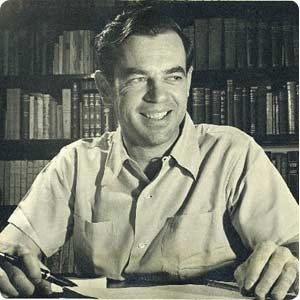
“A transcendent energy consciousness informs the whole world and informs you.”
–Joseph Campbell (American Writer, Editor and Mythologist, 1904-1987)
Are You A Hologram?
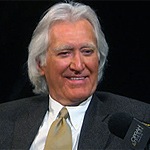
“Each part of the universe contains enough information to reconstitute the whole. The form and structure of the entire world is enfolded within each part.”
–Larry Dossey (American Physician, Editor and Writer, 1940-)
The Web of Life
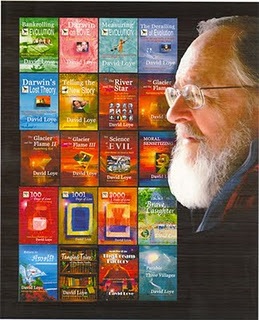
“Working with every conceivable kind of insect and animal from the protozoa upward, biologists have discovered a world of wondrously vast and orderly linkages and feedback loops between our environment and all organisms.”
–David Loye (American Psychologist, Evolutionary Systems Theorist and Author, 1925-)

“The Sphinx and the Rainbow: Brain, Mind, and Future Vision” (David Loye)
Information Overload

The British Economic and Social Research Council (ESRC) has funded some very important research that confirms something that many of us have feared for quite a while: there is now so much information online that important science websites are in danger of becoming buried in a sheer avalanche of facts. Key science sites are failing to register in the top 30 Google search results.
Dr Ralph Schroeder, Dr Alexandre Caldas, Professor William Dutton, and Dr. Jenny Fry of the Oxford Internet Institute have investigated how the Internet is changing the way in which people seek out sources of scientific expertise.
Traditionally publishers have held a central position because of the importance of academic articles, but this is changing with increasing uses of the Internet and Web.
The study focused on how academic researchers in particular interact with the Web on topics including HIV/AIDS, climate change, terrorism, the Internet and society. These subjects are, of course, all highly topical, but the findings of this study will apply much more widely to the uses of the Internet and Web for searching for information on a variety of topics.
The research also confirmed something that clinicians have known for some time: the Web is far from being a neutral source of information. It has a particular structure that steers the search in directions that may not be intended by the user and so makes some sites more accessible than others. Search engines such as Google play an increasingly important gate-keeping role that will influence the information that is found. They can shape “winners and losers” by means that are not always apparent and moreover do so in a manner which can vary according to subject matter.
There is also a problem that some vested interests are able to “buy” high visibility. Many people with psychological difficulties have stumbled on Scientology websites without realizing it. And there are some people who have the time and the energy to attract a lot of “hits.”
The researchers came to several conclusions:
* The “visibility” of information on the Web is of increasing importance. Do people looking for research results on climate change or terrorism find themselves directed to a few top sites rather than a wide array of diverse sources? Do they encounter the most highly regarded researchers rather than marginal ones?
* Interviews revealed that researchers’ ideas of key networks, structures and organisations may not be mirrored by search engines. For example the HIV/AIDS researchers reported using national journals, charity organisations, statistics and public sector organisations but none of these appear in the top 30 search results for generic domain keywords. In addition, a number of institutions, people and other key organisations and resources failed to appear in the top 30 search results.
* The role search engines play can vary according to topic. In the HIV/AIDS and the Internet and society domains, for instance, search engines such as Google was mainly used as an aide memoire for locating known sources. For researchers on terrorism, the search engine played a more central role in exploring the object of research and identifying relevant sites of information.
“This will be an issue not just for policymakers,” Dr. Schroeder says, “but for educators, organisations involved in science and research communication, regulators responsible for access to the Web, and citizens who are concerned with the diversity and richness of the information world around them.”
Rethinking Cancer
Over the last thirty years, there has been a gradual change in the way in which we conceptualize biological processes. Although the lion’s share of research is still dedicated to biochemical processes involving DNA, RNA and the cell membrane, other important concepts are being quite widely accepted. They include:
- Fetal imprinting
- Epigenetic control
- Self-organization
- Self-regulation
- Coherence over time
- Information exchange with the environment
- Symbiosis
- Morphogenesis
One way of thinking about this is to describe cells, organs and bodies as coherent information-rich processes. And when things go wrong, it is because these processes have gone awry. Information medicine is designed to bring the system back into coherence and harmony.
I have spoken before Integrated Medicine and in the next posting I am going to talk more about the difference between Integrated, integrative and integral medicine. But at this point suffice to say that Integrated Medicine is information medicine based on an understanding of these principles.
Several years ago I presented a paper at a closed meeting where I introduced the term “adult dysmorphogenesis,” to describe the way in which some disease processes – such as arteriosclerosis, arthritis and Alzheimer’s disease – could be better understood not as degenerative conditions, but as deranged information systems. These in turn disrupted the normal self-organizing principles of the body that lead it to constantly correct and repair itself. Part of my reasoning was that we were constantly seeing apparently irreversible conditions like broken down joints being repaired by information medicines like acupuncture and homeopathy.
With that background I was very interested to read an important paper in the journal Theoretical Biology and Medical Modelling.
The paper begins by highlighting three odd observations:
- Throughout the animal kingdom cancer hardly ever occurs in tissues that have a strong ability to regenerate
- In animals in which cancer occurs frequently, its incidence rises with age. If it occurs in a young animal it usually occurs in a tissue that has already been damaged
- In animals that have a strong ability to regenerate and repair organs, these mechanisms remain fairly efficient throughout life. In animals with weak regenerative and repair mechanisms, they tend to become less efficient with age.
The authors propose that when an organ is damaged it receives a signal to start undertaking repairs. The cancer cell is the one cell in an organ that is able to respond to the signal telling it to start to proliferate. It is the one cell that is trying to restore function. So simply removing a cancer might not work if the organ remains damaged: new tumor cells would simply keep emerging.
This paper is a good complement to another in the same journal. This one is a bit more mathematical, but also views cancer as a dynamic systems problem.
Ideas like this have come and gone before, but I have not seen them so well presented before, and they open up some new ways of thinking about a set of problems that is altogether too common.
Moving away from thinking that cancers are all simply the result of mutated or messed up DNA toward the idea that they may owe just as much to the environment in which they grow makes very good sense.
Life is Information at Work
“Information is "a difference that makes a difference.”
–Gregory Bateson (English Anthropologist, Social Scientist, Linguist, Cybernetician and Writer, 1904-1980)
Much of the work in which we’ve been engaged needs us to look very hard at what is life? Is it simply a collection of biochemical reactions glowing in the dark, or is it something more complex, laden in meaning and purpose. This is not an academic exercise: unless and until we can better understand the fundamental processes of life, it is difficult to advance the practice of medicine and the processes of health and wellness.
A fundamental tenet of Healing, Meaning and Purpose is that we live in a non-dual Universe, of which consciousness, information and energy are the primary manifestations and principles. I present a great deal of solid scientific material that you can use immediately. It’s all based on the fundamental concept that illness is caused by degradation in the storehouse of information that sustains the body.
Comprehensive treatment and persistent robust physical, psychological, social, subtle and spiritual health is rooted in clear, harmonious, integrated information. And that is why physical treatments – sometimes including medications – may be an essential component of helping someone get well, but is nonetheless just one piece of the puzzle. It is essential also to ensure that the information and communication between each aspect of a person and his or her environment are also clear, harmonious and integrated. Without those other pieces, we may be doing no more than putting a band aid on a problem.
Valentino Braitenberg the former director at the Max Planck Institute for Biological Cybernetics in Tübingen, Germany, has always had some interesting things to say. He is a truly original thinker who’s also, IMHO, a fine human being.
I recently came across this in his last book, Das Bild der Welt im Kopf: Eine Naturgeschichte des Geistes, published in 2003 by LIT Verlag, Munster:
“Living organisms contain information, are the result of information, pass on information, and information made flesh in the conditions that their environmental niches impose for survival. To read this information is to recognize the very essence of a living organism.”
I think that this is the most succinct summary of what is to be a living organism. Yes, of course, you are made up of atoms and molecules. But the key point is that you are maintained by a constantly flowing river of information. Without it your body, your mind, your relationships and your spiritual essence would cease to flow.
Any treatment worth its salt will always be directed toward correcting and modulating and integrating this flow of information.
Anything less, and we are simply moving around the deckchairs on the Titanic.
“The original root of the word "information" is the Latin word informare, which means to fashion, shape, or create, to give form to. Information is an idea that has been given a form, such as the spoken or written word. It is a means of representing an image or thought so that it can be communicated from one mind to another rather than worrying about all the information afloat in the world, we must ask ourselves what matters to us, what do we want to know. It’s having ideas and learning to deal with issues that is important, not accumulating lots and lots of data.”
–Theodore Roszak (American Social Thinker, Critic and Writer, 1933-)
“Man must go back to nature for information.”
–Thomas Paine (English-born American Political Theorist and Writer, 1737-1809)
Searching for the Laws of Life
In the book of Genesis, God’s fifth act of creation was to create life on earth. Of course, modern science has a different myth.
In the beginning, there was a simple soup of inorganic chemicals: water, ammonia and methane. And into this soup came a bolt of lightning that brought into being the amino acids that gradually assembled themselves into peptides and proteins and the nucleotides from which came RNA and DNA. And the DNA learned the art of becoming self-replicating and so began the ascent of life.
I recently reviewed a fine book – The Fifth Miracle, by Paul Davies – on the Amazon website. Paul points out that believing the scientific myth demands an act of faith and credulity as great as believing in the literal truth of the Biblical story. He is one of many scientists who have calculated the seemingly impossible odds of all this happening by chance. This is not some back door into intelligent design, but instead an exploration of some profoundly important ideas in biology that make us realize that there are some gaping holes in our current models.
We know that inorganic processes tend to run down and become disorganized over time: they show entropy. By contrast living processes become progressively more organized, a process that requires massive amounts of information. It is not difficult to calculate that the amount of information required for even the simplest organism far out strips the biochemical processes of an organism. Thus the implication that life requires a new fundamental law of nature that is yet to be discovered.
If this is true, and the mathematics indicate that it is, it would imply that life should exist everywhere, and wherever it is found it would march toward progressive greater and greater complexity, that would eventually lead to sentience.
The most likely candidate for this natural law is information. The book and CD series, Healing, Meaning and Purpose is dedicated to this notion that a fundamental property of the Universe is conscious awareness and that the first content of awareness is information, in its technical sense. And it is this information together with energy that generates the subtle systems that animate biochemical processes.
Long after I wrote that, I came across an important paper by someone whose work I like very much: William Tiller. In the paper he examines homeopathy as a form of “information medicine,” and comes up with some interesting mathematical modeling to support his conjecture, which I feel sure is correct.
There is also some older data that supports this idea of information. A study from Brazil examined highly diluted thyroid gland extract on the rate at which tadpoles developed into frogs. The extract increased the speed of metamorphosis of the tadpoles, despite the fact that the solutions were so dilute that there could not have been any molecules present. This work was in fact a replication of work done in 1995 in Graz, Austria.
There is a much larger literature than most people realize on this idea of information in biological systems, though most has been presented at meetings or written about in textbooks.
But I’d like to leave you with an interesting paper that is easily accessible. It has the title “Paranormal phenomena in the medical literature sufficient smoke to warrant a search for fire.” The author has done us a great service by collecting a large number of cases of phenomena – collected by physicians and other educated people – that cannot be explained within the current biomedical paradigm. He includes some splendid examples, including the well-documented cases of people being able to speak foreign languages of which they have no conscious knowledge. The most parsimonious explanation for the observations? Information transfer between individuals, even if sometimes separated by many miles.
“Disease of the body as we know it, is a result, an end product, a final stage of something much deeper. Disease originates above the physical plane, nearer to the mental. It is entirely the result of a conflict between our spiritual and mortal selves. So long as these two are in harmony, we are in perfect health: but when there is discord there follows what we know as disease.”
–Edward Bach (English Physician and Creator of the Bach Flower Essences, 1886-1936)
A Very Useful Demonstration of Thought Field Therapy
I have written several times about the tapping therapies: primarily thought field therapy (TFT) and its child: emotional freedom technique (EFT). They also play a central role in the combination of techniques that I discuss in Healing, Meaning and Purpose, and my forthcoming book, Sacred Cycles.
Andy Hunt in the UK has a very nice blog, and I found a reference to another website for the Center for Integrative Psychotherapy. This one contains a very nicely done short video demonstrating TFT.
I’ve had a lot of experience with these therapies, and despite a paucity of research, they really do seem to work with a great many people. This video is a wonderful service: it shows you what to expect from treatment.
Thank you Andy for alerting me to the site, and thank you to Mary Sise for making the video and for making it available for free.







